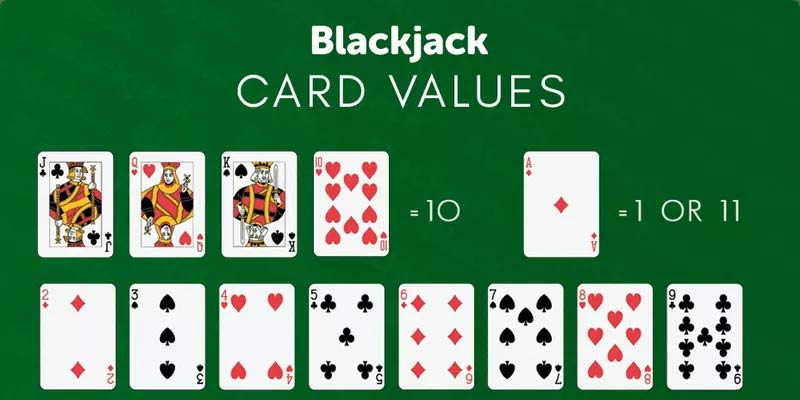Blackjack Rules – Your Guide to Mastering the Game

Blackjack Rules – Your Guide to Mastering the Game
Blackjack is one of the most popular card games in casinos worldwide, known for its blend of strategy, luck, and simple yet engaging gameplay. Understanding the blackjack rules is essential for anyone looking to enjoy this classic game, whether at a physical table or online. In this guide, we’ll break down the core blackjack rules, explore variations, and offer tips to help you play with confidence link 789win.
The Basics of Blackjack Rules
At its heart, the blackjack rules are straightforward: your goal is to beat the dealer by having a hand value closer to 21 without going over. The game uses a standard deck of 52 cards, and each card has a point value—numbered cards (2-10) are worth their face value, face cards (Jack, Queen, King) are worth 10, and Aces can be worth 1 or 11, depending on what benefits your hand.
A typical round begins with players placing their bets. The dealer then deals two cards to each player and two to themselves—one face-up and one face-down (the “hole card”). Based on the blackjack rules, players decide their next move: hit (take another card), stand (keep their current hand), or, in some cases, double down or split (more on these later). The dealer follows a fixed set of rules, usually hitting on 16 or below and standing on 17 or higher.
How to Win Under Blackjack Rules
Winning in blackjack hinges on a few key outcomes governed by the blackjack rules. If your hand totals 21 with just two cards (an Ace and a 10-value card), you’ve got a “blackjack,” which typically pays 3:2 odds. If your hand is closer to 21 than the dealer’s without exceeding it, you win even money (1:1). However, if you “bust” (go over 21), you lose your bet immediately, regardless of the dealer’s hand.
The dealer’s actions are predictable under standard blackjack rules, making it a game where strategy can tilt the odds slightly in your favor. For example, knowing when to hit or stand based on the dealer’s upcard is a fundamental skill that separates novices from seasoned players.
Key Options in Blackjack Rules
Beyond hitting and standing, blackjack rules offer additional moves to enhance gameplay:
-
Double Down: After receiving your first two cards, you can double your bet and take one more card, then stand. This is often used when you have a strong hand (like a total of 10 or 11) and the dealer’s upcard is weak.
-
Split: If your initial two cards are a pair (e.g., two 8s), you can split them into two separate hands, doubling your bet and playing each hand independently. Note that splitting Aces usually limits you to one additional card per hand.
-
Surrender: In some variations, you can forfeit your hand after the initial deal, losing half your bet. This is a rare option but useful when the dealer shows a strong card like an Ace.
-
Insurance: If the dealer’s upcard is an Ace, you can place a side bet (half your original wager) that the dealer has blackjack. If they do, it pays 2:1, offsetting your main bet loss.
These options add depth to the blackjack rules, giving players flexibility to adapt to different situations.
Common Variations in Blackjack Rules
While the core blackjack rules remain consistent, casinos often tweak them to create unique versions. For instance, in European Blackjack, the dealer only takes their second card after all players have acted, reducing the chance to peek for blackjack early. In contrast, Spanish 21 uses a 48-card deck (no 10s) but offers bonus payouts for specific hands, like a 5-card 21.
Online platforms may also adjust blackjack rules, such as offering “Double Exposure” (both dealer cards face-up) or “Single Deck Blackjack” for lower house edges. Understanding these variations ensures you’re prepared no matter where you play đăng ký 789win.
Tips for Playing by Blackjack Rules
Mastering blackjack rules is just the start—here are some practical tips to improve your game:
-
Learn Basic Strategy: Charts exist showing the statistically best move for every hand versus the dealer’s upcard. For example, always split Aces and 8s, but never split 10s.
-
Manage Your Bankroll: Set a budget and stick to it. The fast pace of blackjack can drain funds quickly if you’re not careful.
-
Avoid Insurance Bets: Unless you’re counting cards (a rare skill), insurance is generally a poor bet due to its high house edge.
-
Practice Online: Many sites offer free games to test the blackjack rules without risking money, perfect for honing your skills.
Why Blackjack Rules Matter
The beauty of blackjack lies in its balance of simplicity and strategy, driven by its rules. Unlike purely luck-based games, knowing the blackjack rules lets you make informed decisions that influence the outcome. With a house edge as low as 0.5% when played optimally, it’s one of the fairest casino games—provided you understand how to play.
Conclusion
The blackjack rules form the foundation of a timeless game that’s captivated players for centuries. From the basic goal of reaching 21 to the strategic choices like doubling down or splitting, these rules offer endless opportunities for fun and challenge. Whether you’re at a casino table or enjoying an online version, grasping the blackjack rules is your ticket to a rewarding experience. Ready to test your skills? Deal yourself in and see where the cards take you!




